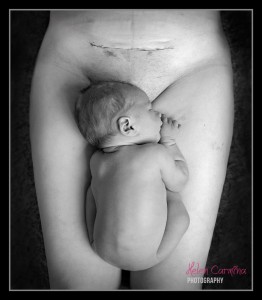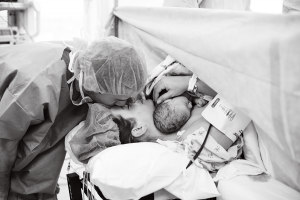There is lots of misleading information going around about C-sections. It’s time to get a few things right. Let’s see some of the most common misbelieves.

1. C-section is the easier way
Having a planned C-section really means that you can give birth without going through the pain of labour. But let us not forget, it is an abdominal surgery, and no new mother has the time to just rest for weeks, since there is a baby to take care of. The wound can hurt for a long time and in many cases it is still sensitive after months. Not to mention, it is not easy to move around with a 10-12 centimetres long scar on your belly. It is much more difficult for the uterus to go back to its original size than after a vaginal birth. There can be many complications and their probability grows after every C-section. Emergency C-sections can occur after 12-24 hours of labour, so in those cases it is even harder to talk about “an easier way”.
2. Once a C-section, always a C-section
Thank God, it is not like that. Of course OB/GYNs have to look at a pregnancy in many different ways after a C-section, but a VBAC (vaginal birth after caesarean) is not impossible in a supportive environment. The most common argument is regarding the disunion of the scar, when the previous cut on the uterus reopens. The probability of this is between 0.6% and 1%, so this is not such a high risk that one shouldn’t even try with VBAC. After a successful VBAC the medical consultant or the midwives monitor the scar. The most important is that VBAC is not impossible, and it is not irresponsible to try. One just has to find the competent companions to do it with. But we’ll write more about this later.
3. With C-section anoxia is avoidable
Most of the time anoxia occurs because of the malfunction of the placenta. It happens one third of the time still within the womb, one third during and one third after birth. In spite of this, in Hungary the number of caesareans grows every year, by the year 2015 it reached 39%, while the number of children born with anoxia did not change. This surely tells a lot…
4. Umbilical cord around the neck, breech, high weight foetus – a C-section is a must
These really can be indications of a caesarean but they don’t have to be. The health of the mother and the child are the most important when deciding whether mother and baby can go ahead to try vaginal birth. However, it also depends on the so called protocol of the hospital and the doctor or midwife. That’s why expertise is essential. Of course, along with a supportive and trusted environment where everyone knows when the right time really comes to go to the theatre.

5. When having a C-section the bond between mother and child is harmed
Babies born with a caesarean have to go through a completely different journey and this can be a big challenge for them. From the comfort and warmth they get lifted into a cold surgery room, and get separated from their mother for hours in many cases. Mother often cannot even think about their well-deserved golden hour. This is far from ideal. But through cuddles, skin-to-skin and babywearing the missed moments can be made up for and we don’t have to listen to anyone who tells us otherwise. Unfortunately, sometimes mothers could feel distant from their baby and the previously happily awaited time can turn into misery.
+1 A C-section is not childbirth
It is a very mean statement and not even the slightest true. Never believe that you didn’t give birth or that you are not a perfect mother.
You don’t have to feel ashamed of anything, even if C-section was a trauma for you or if you did not care about it and everything was great afterwards. Talk about your feelings. You have to know that whatever you are feeling or going through you are not alone. Whatever ways your baby was born, you surely are the most amazing mother he/she can wish for!
